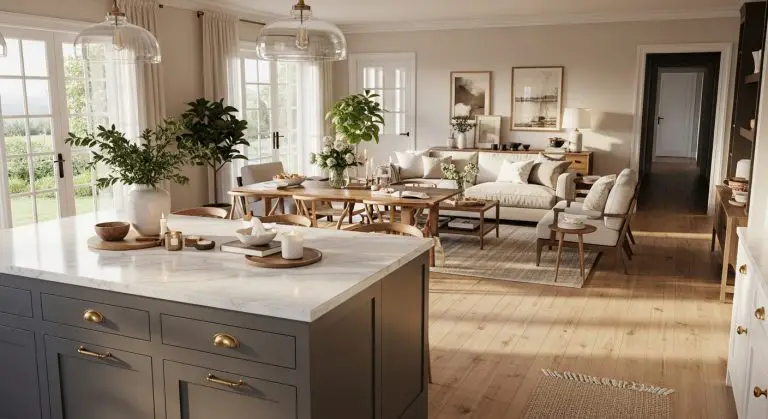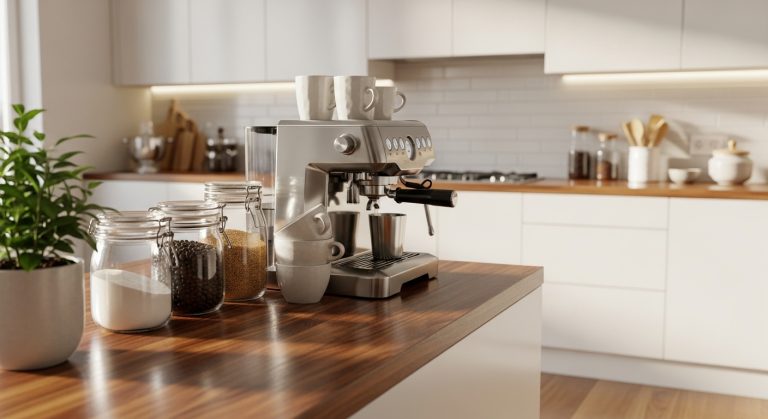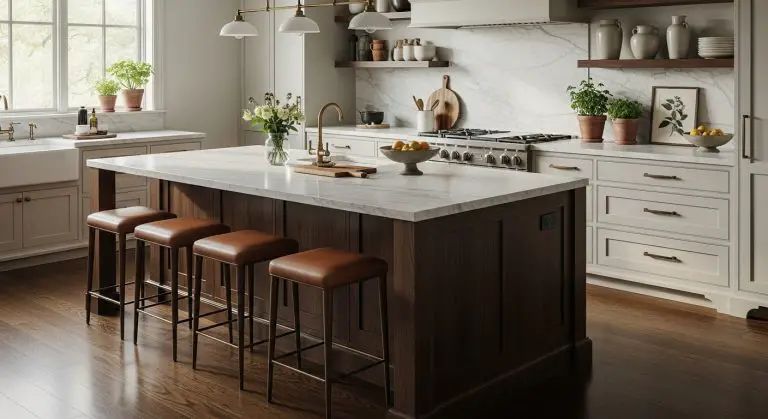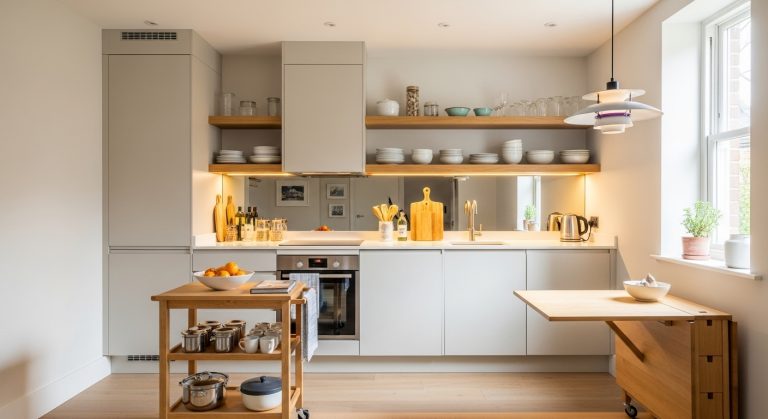Two Tone Kitchen Cabinets: 15+ Stylish Ideas That Actually Work in Real Life
Ever looked at a kitchen and thought, “Wow, this is way too matchy-matchy”? Yeah… me too. That’s where two tone kitchen cabinets come in. They add contrast, personality, and a little “designer magic” without making you remortgage your home.
I’ve been a fan of this trend for years, mostly because it’s flexible. You can go bold, subtle, rustic, modern, or somewhere in between. And the best part? You can often make the upgrade without ripping out your entire kitchen (which, IMO, is a win for your wallet and sanity).
So, grab a coffee and let’s run through 15+ two tone kitchen cabinet ideas that actually work.
1. Classic White on Top, Dark on Bottom
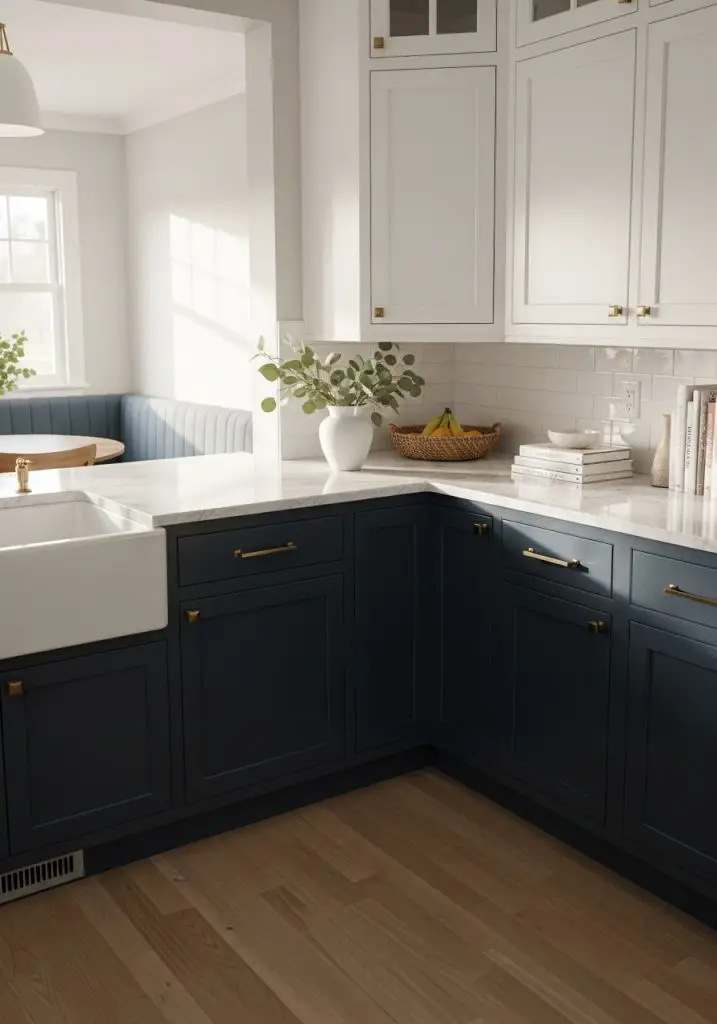
Let’s start with the crowd-pleaser. White upper cabinets keep things light and airy, while dark lower cabinets (navy, black, deep green) ground the space. This setup visually expands the room and still feels timeless.
Pro tip? Use matte finishes for the dark cabinets to hide fingerprints. Nobody wants to spend all day wiping down smudges.
2. Soft Neutrals with a Warm Twist
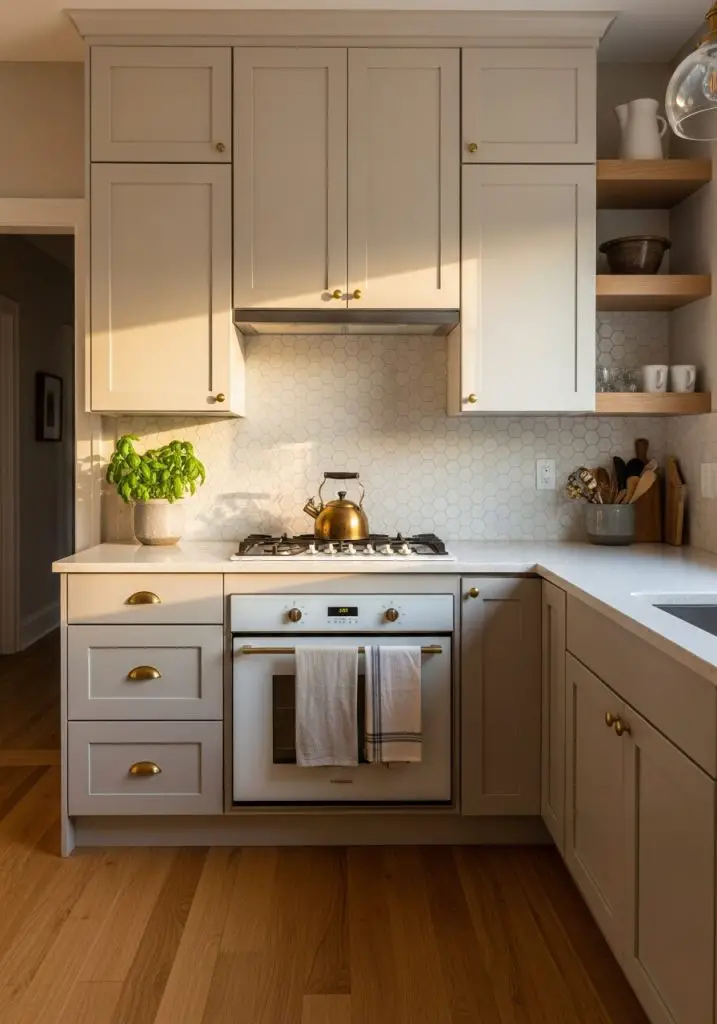
If stark contrast isn’t your thing, try pairing cream uppers with light taupe or beige lowers. It’s subtle, but it creates depth and avoids the “all one color” monotony.
I love this in kitchens with lots of natural light. Add warm brass hardware, and boom—you’ve got cozy elegance without committing to wild colors.
3. Bold Island, Neutral Perimeter
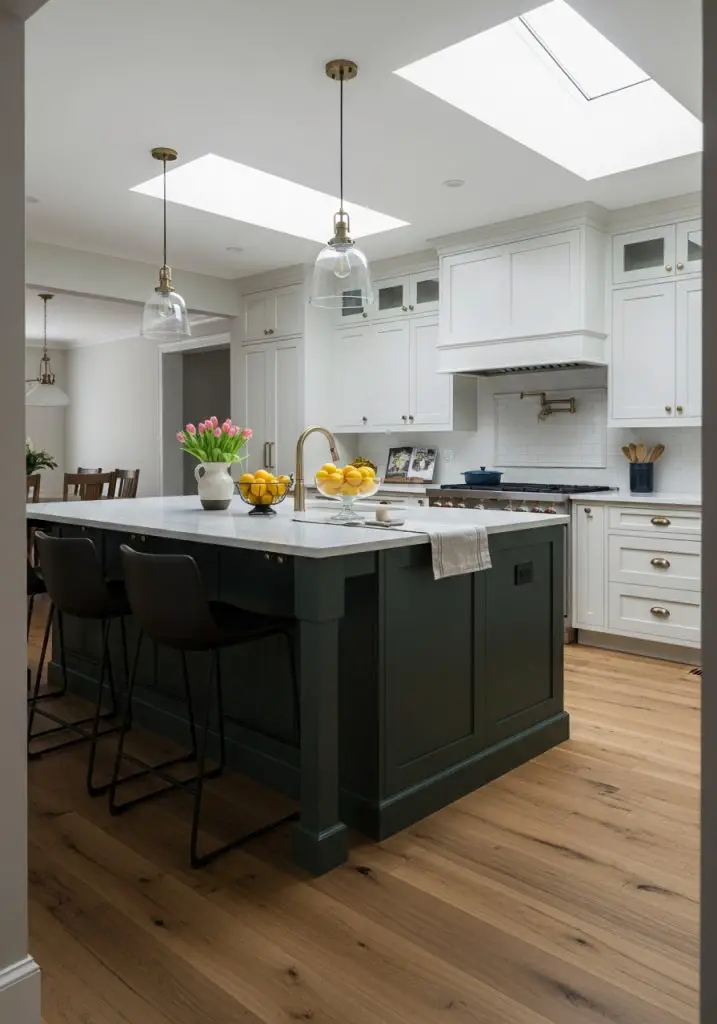
Not ready to go full two-tone on all cabinets? Make your kitchen island the star of the show. Keep your perimeter cabinets neutral (white or light gray), and give the island a bold pop—think teal, forest green, or charcoal.
It’s like having an accent wall, but in cabinet form. Plus, it’s easier to repaint down the road if your style changes.
4. Black and Wood for Modern Edge
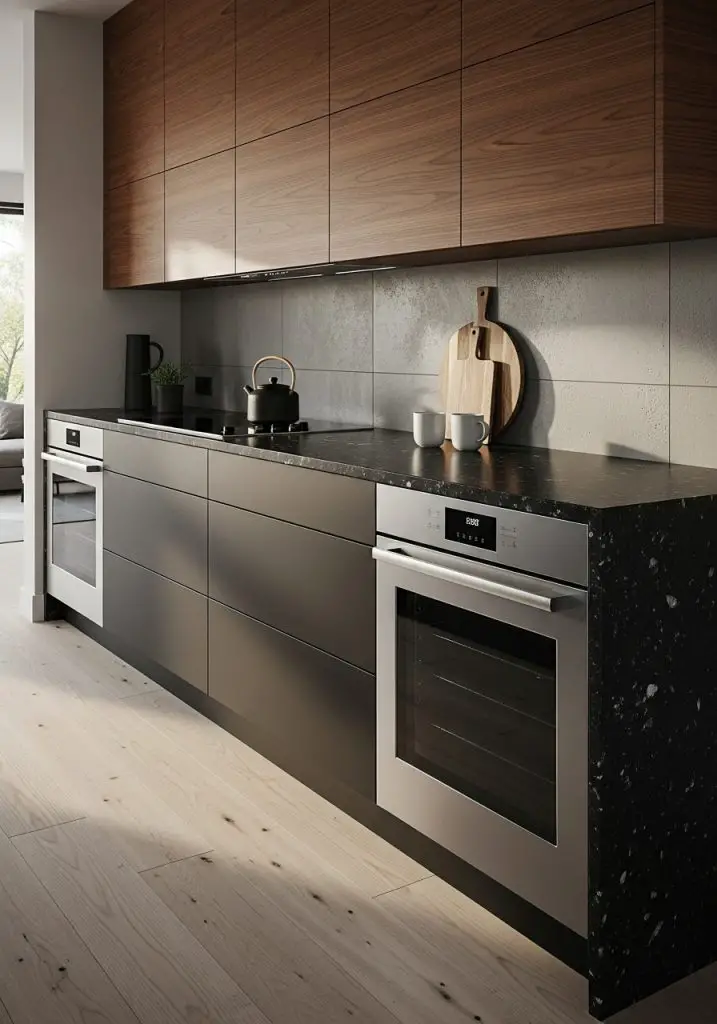
Want drama? Matte black cabinets paired with natural wood grain can make your kitchen look like it belongs in a high-end design magazine. The wood softens the boldness of black, keeping it warm and inviting.
Just make sure you balance it with lighter countertops or a bright backsplash, so it doesn’t feel like a cave.
5. Moody Blues with Marble Accents

A deep navy base cabinet with crisp white uppers and marble countertops? Chef’s kiss. This combo works beautifully in both modern and traditional spaces.
Bonus: Navy hides dirt way better than white. You can spill coffee on it and still keep your dignity until cleanup time.
6. Two Tone + Open Shelving
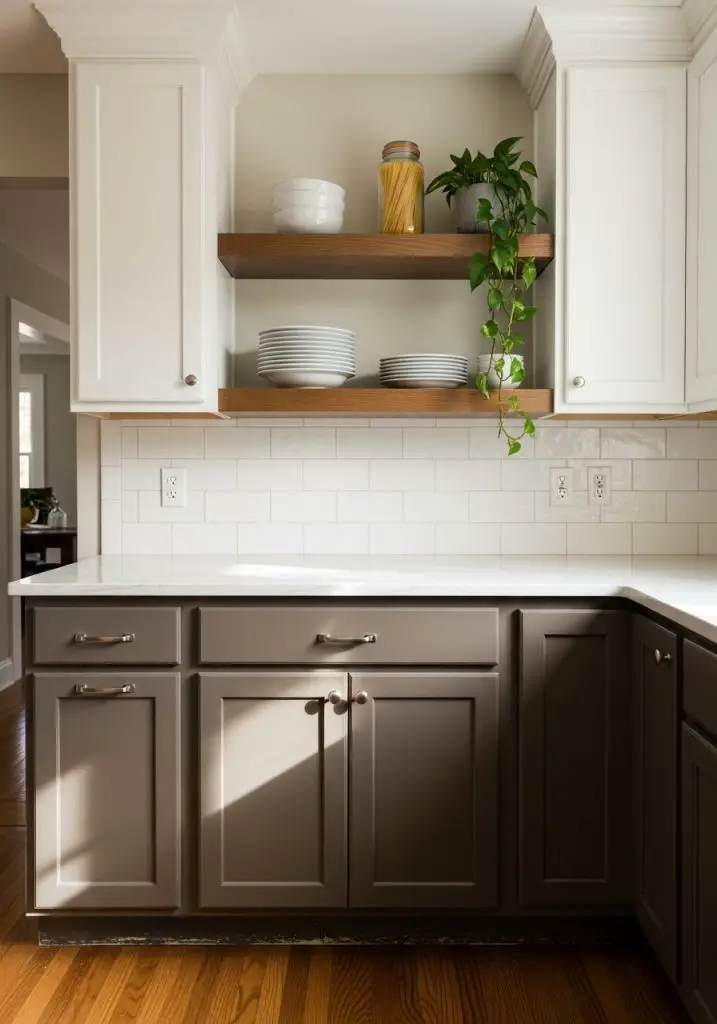
Mixing two tone cabinets with open shelving can make your kitchen feel larger and more relaxed. For example, dark lowers, white uppers, and a couple of open wood shelves break up the monotony while adding texture.
Perfect for showing off your prettiest dishes (or hiding the ugly mugs in the closed cabinets below).
7. Color Blocking for Impact
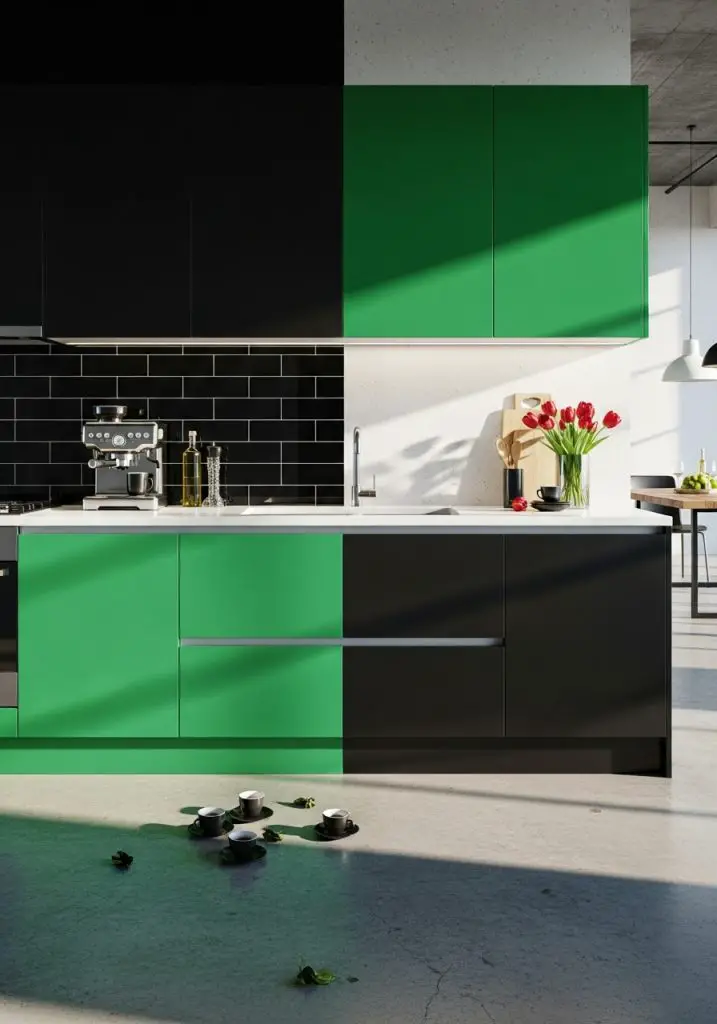
If you’re feeling bold, go for true color blocking—half the kitchen one solid shade, half another. Think emerald green and matte black, or dusty pink and soft gray.
This works best in modern layouts with clean lines, where the cabinetry itself is the star.
8. Earthy Greens with Warm Neutrals
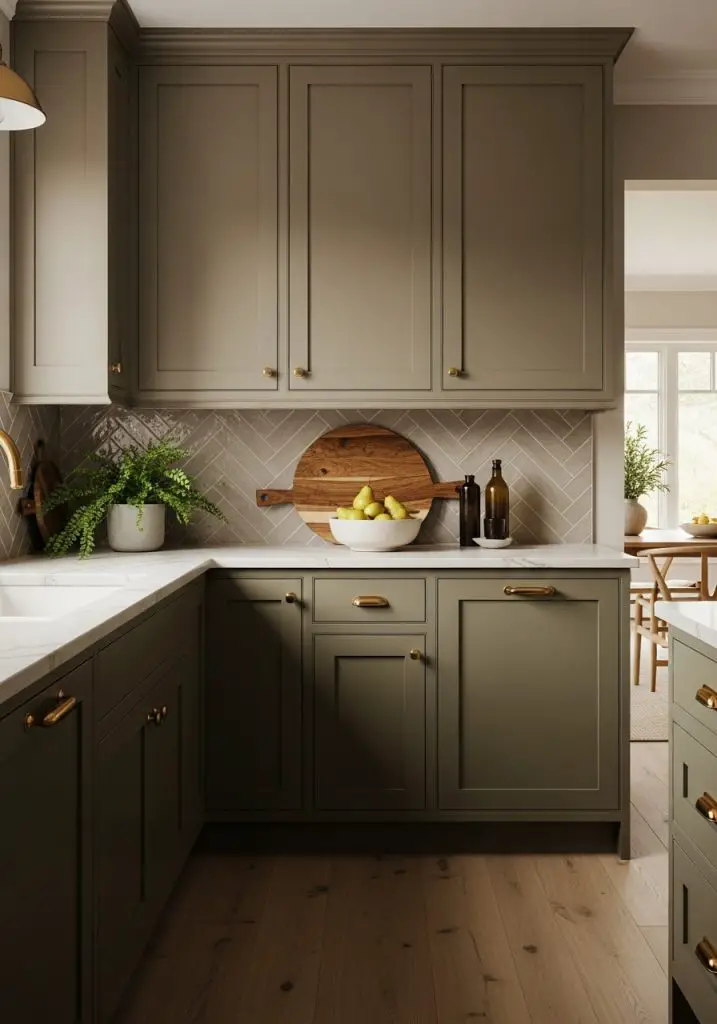
Olive green base cabinets with warm beige or cream uppers scream “organic modern.” It’s cozy, but still feels fresh. Add brushed gold hardware for extra richness.
This look pairs especially well with wood accents—like floating shelves or butcher block countertops.
9. High-Gloss Contrast
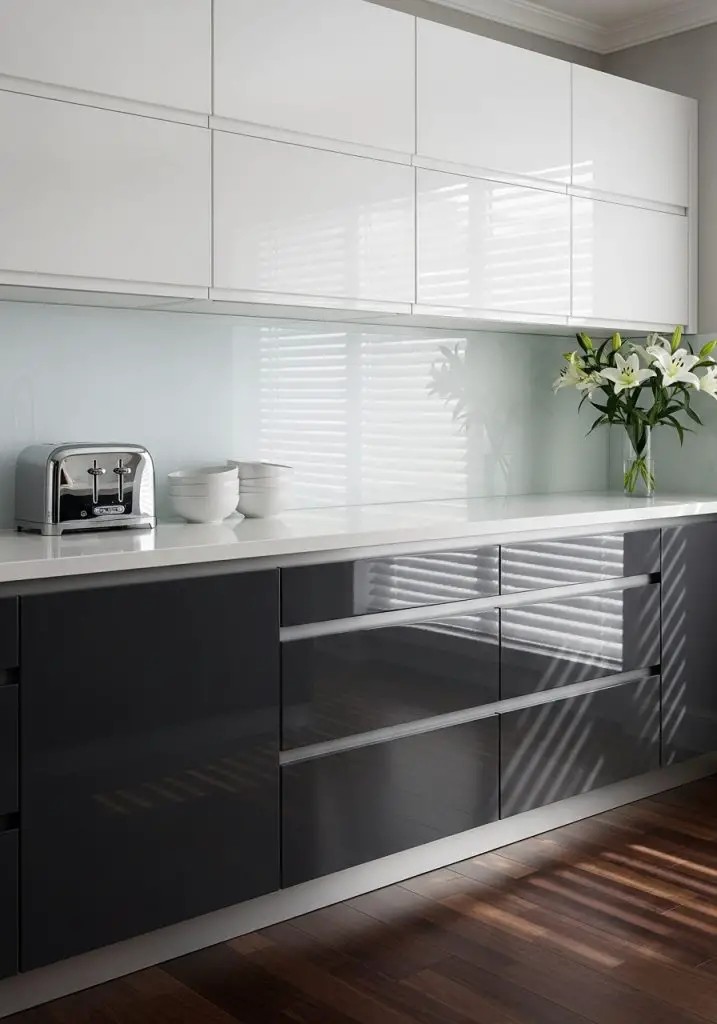
For a sleek, contemporary vibe, mix high-gloss white uppers with glossy charcoal or espresso lowers. The reflective finish bounces light around, making even small kitchens feel bigger.
Warning: high-gloss shows fingerprints and smudges. Keep the microfiber cloth handy.
10. Warm Wood and Sage Green
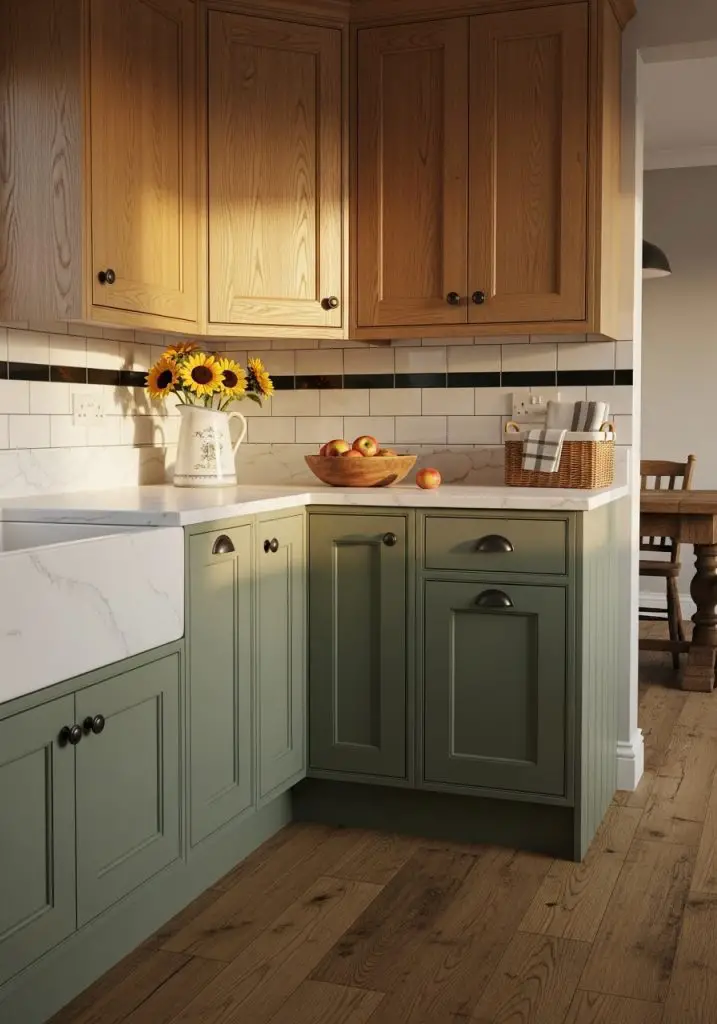
This is my personal fave right now. Warm oak mixed with muted sage feels calming and nature-inspired. It works beautifully in farmhouse, boho, or Scandinavian-style kitchens.
Pair it with a white subway tile backsplash to keep it bright and timeless.
11. Monochrome Play
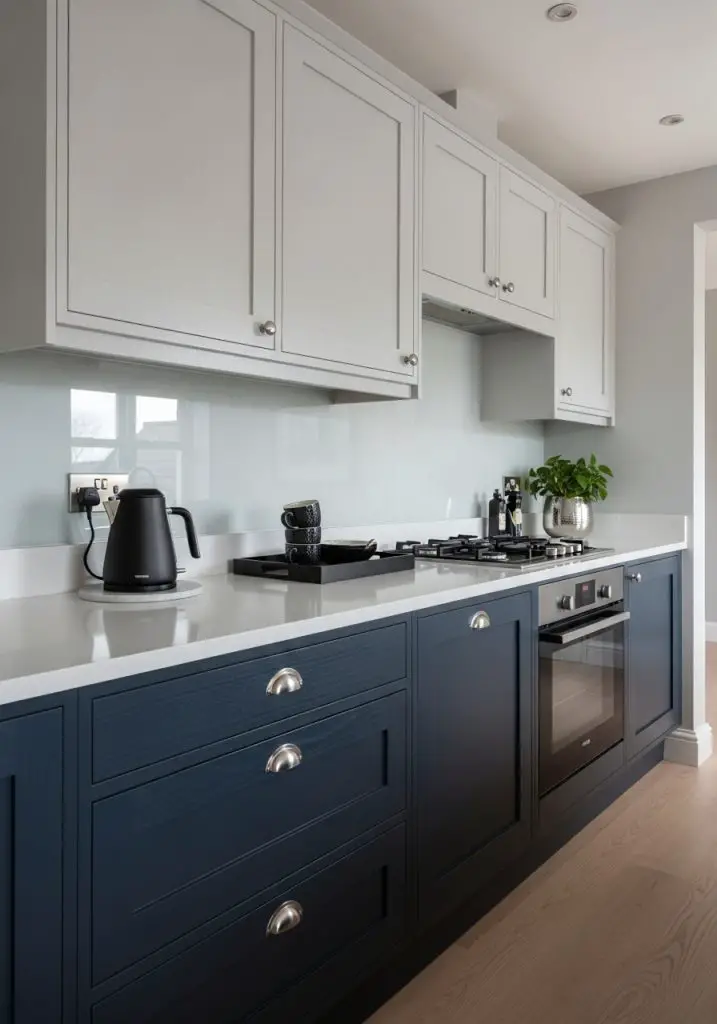
Two tone doesn’t always mean wildly different colors. Try using the same color family—like light gray uppers with deep charcoal lowers. The result is a layered, sophisticated look that’s easy to match with other decor.
Plus, it’s a safer bet if you’re scared of bold color commitment.
12. Pop of Color in the Pantry
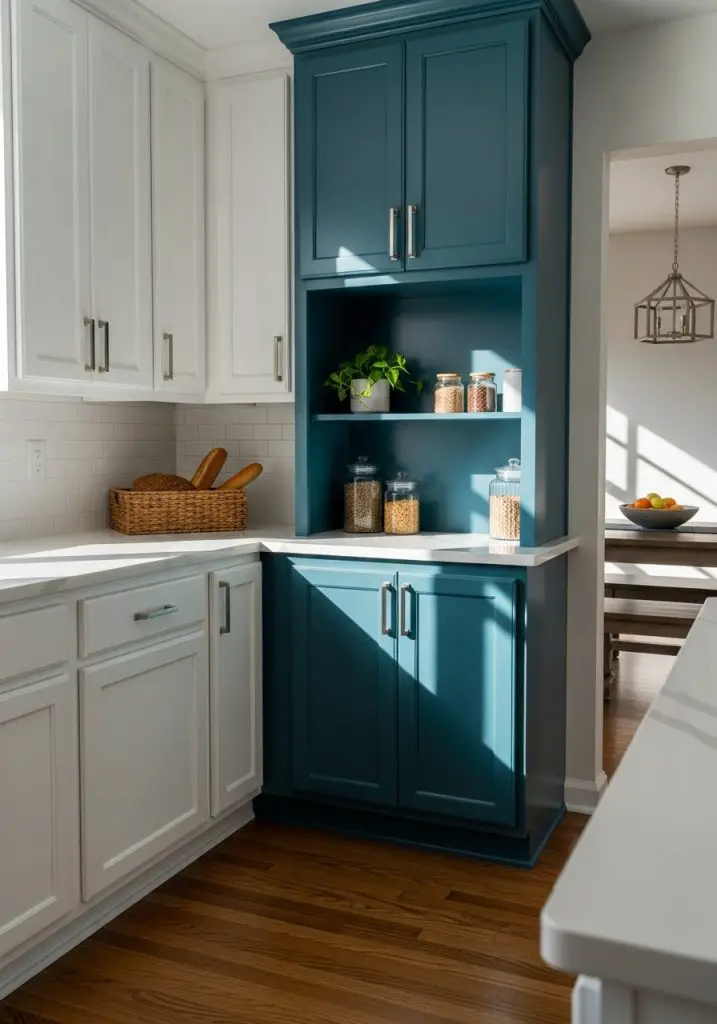
Who says both tones have to be in the main kitchen? Keep your primary cabinets neutral, but make your pantry or built-in hutch a different color.
It’s a fun surprise element and an easy way to experiment with a shade you love.
13. Industrial Chic
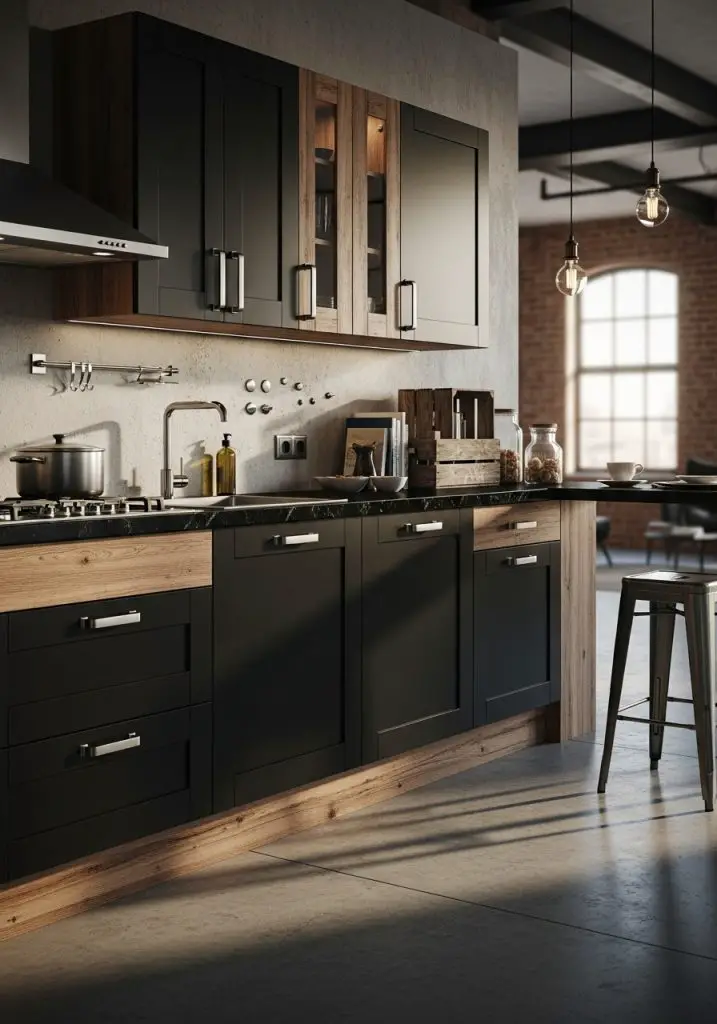
Combine matte black with distressed metal finishes or reclaimed wood for a raw, urban feel. This works best in loft-style spaces or kitchens with exposed brick.
Add Edison bulb lighting, and you’re basically living in a Pinterest board.
14. Crisp White and Pastels
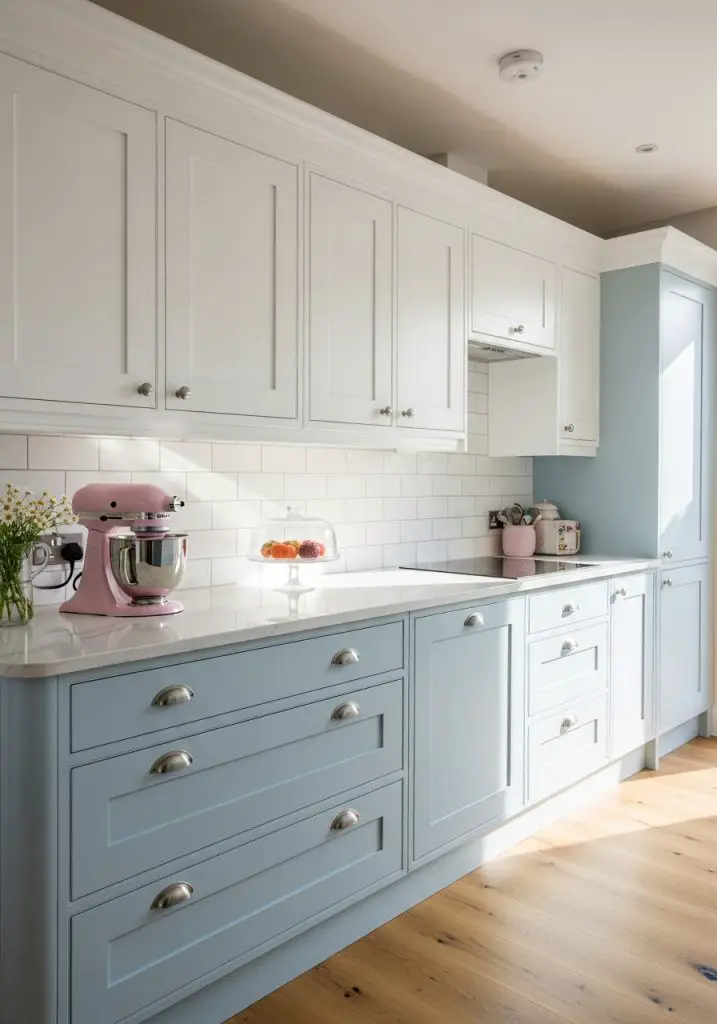
For a softer, more romantic look, pair white cabinets with pale blue, blush pink, or mint green. This combo is perfect for cottage or coastal kitchens.
Pastels keep things light and breezy—ideal if you want a kitchen that feels like a perpetual summer afternoon.
15. Reverse the Rules

Most people go light on top, dark on bottom. But why not flip it? Dark uppers and light lowers can create a unique, unexpected look.
Just make sure your lighting is on point—dark uppers can make the room feel smaller if the space is already dim.
16. Rustic Two Tone Charm
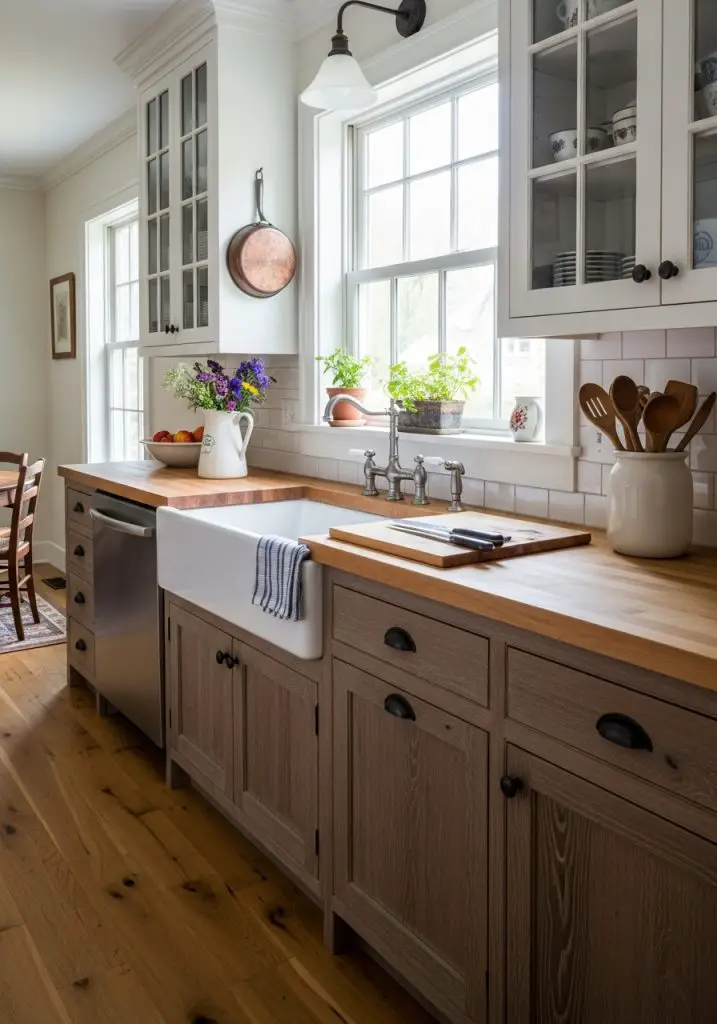
Mix weathered wood lowers with painted white uppers for a rustic farmhouse feel. It’s cozy, approachable, and works especially well with vintage-style hardware.
Perfect for people who want their kitchen to feel “lived-in” rather than showroom-perfect.
17. Minimalist Scandinavian
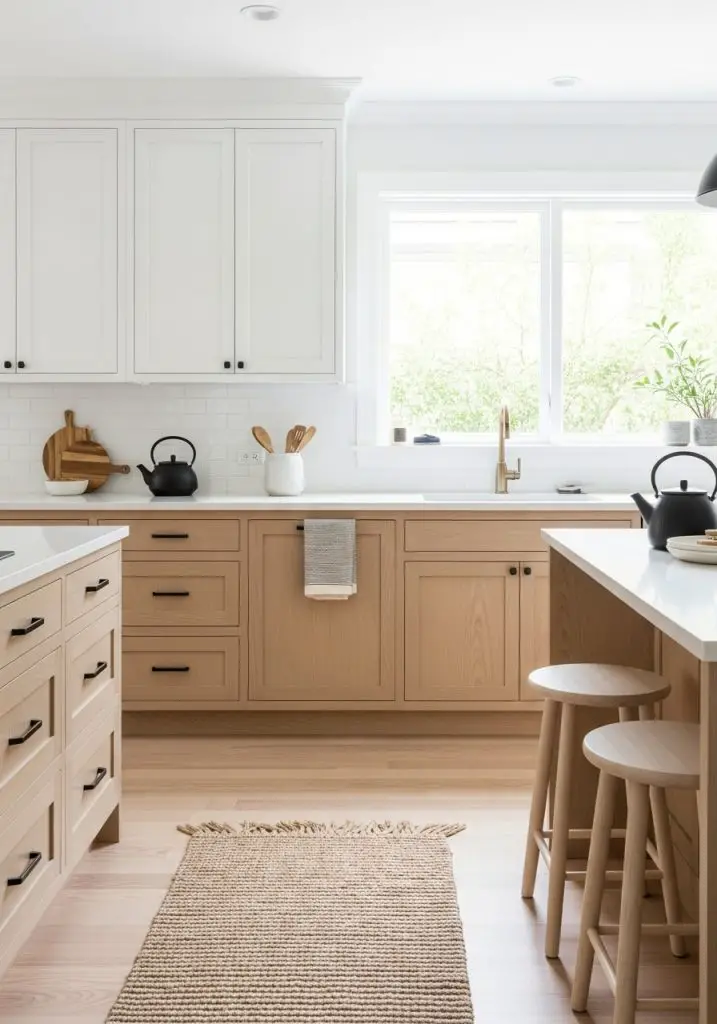
If you love clean lines and simple palettes, try white uppers with pale wood lowers. Add black hardware for a little graphic edge.
This style thrives on natural light and uncluttered counters—so maybe hide the air fryer when guests come over.
18. Metallic Accents with Two Tone
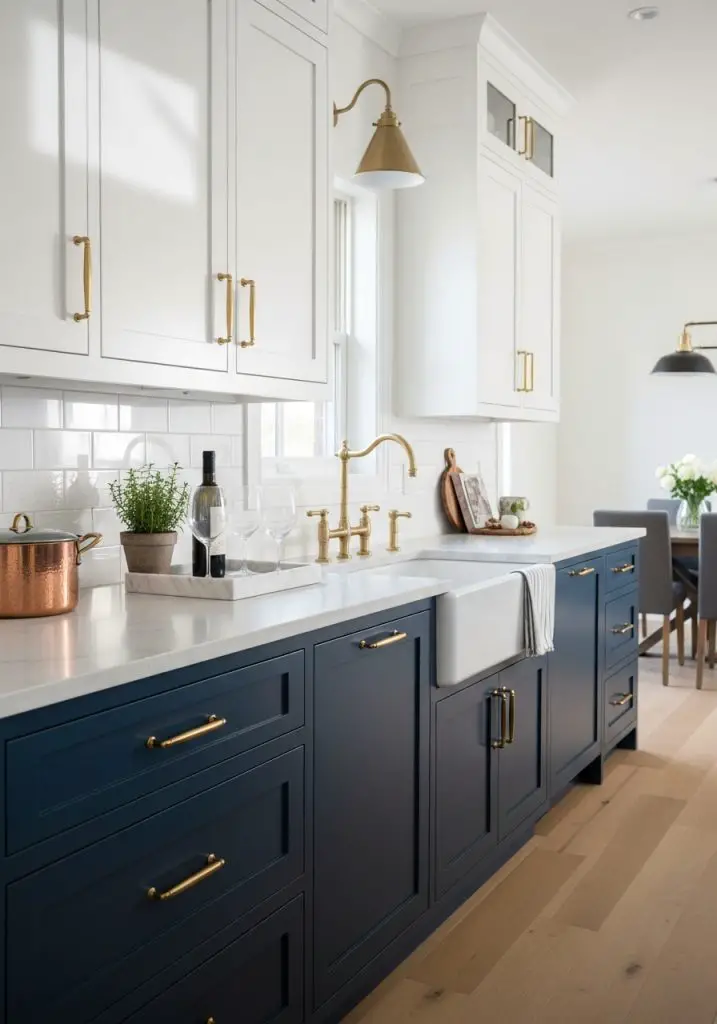
Add a dash of luxury by pairing your two tone cabinets with metallic elements—like copper handles, brass faucets, or stainless-steel appliances.
The metal acts as a bridge between the two colors, making the contrast feel intentional and polished.
Tips for Pulling Off Two Tone Kitchen Cabinets
Before you grab a paintbrush or start shopping, keep these tips in mind:
- Balance is key – Too much contrast can feel chaotic.
- Tie it together – Use hardware, countertops, or backsplash to connect both tones.
- Test first – Always sample paint or finish in your actual kitchen lighting.
- Consider longevity – Choose colors you’ll love for years, not just a season.
Final Thoughts
Two tone kitchen cabinets aren’t just a trend—they’re a smart way to inject personality into your kitchen without a full remodel. Whether you lean classic, rustic, or bold, there’s a version that fits your style.
And hey, worst case? If you hate it in five years, paint is still cheaper than new cabinets. 😉
So, which of these ideas made you say, “Yep, I could live with that”?

Sarah Johnson have over 15 years of experience in residential design, she specializes in creating stylish, functional spaces that feel like home. Her work has been featured in Better Homes & Gardens and Architectural Digest, and through HouzGem, she shares practical tips and inspiration to help readers transform their living spaces with confidence and creativity.

